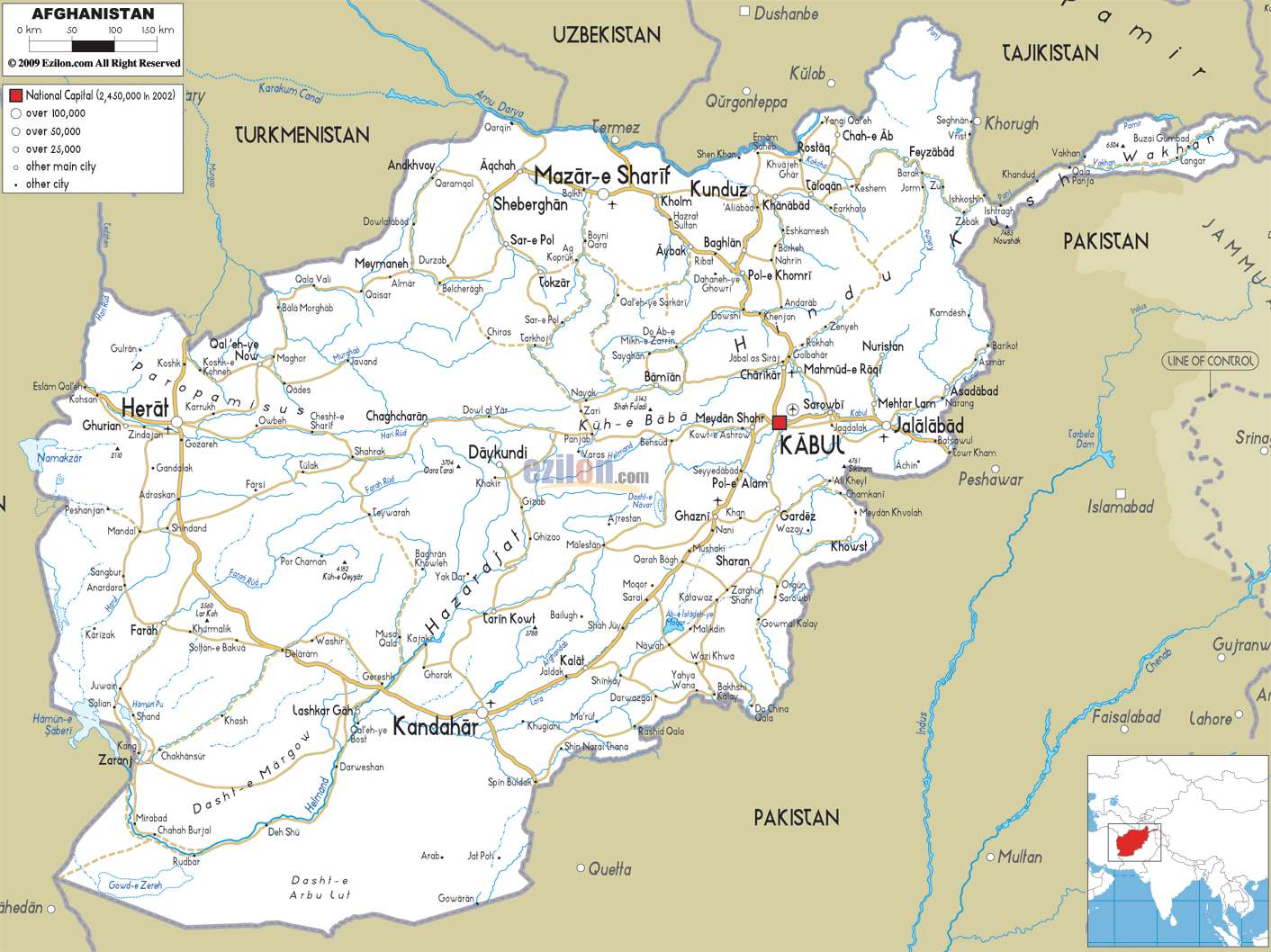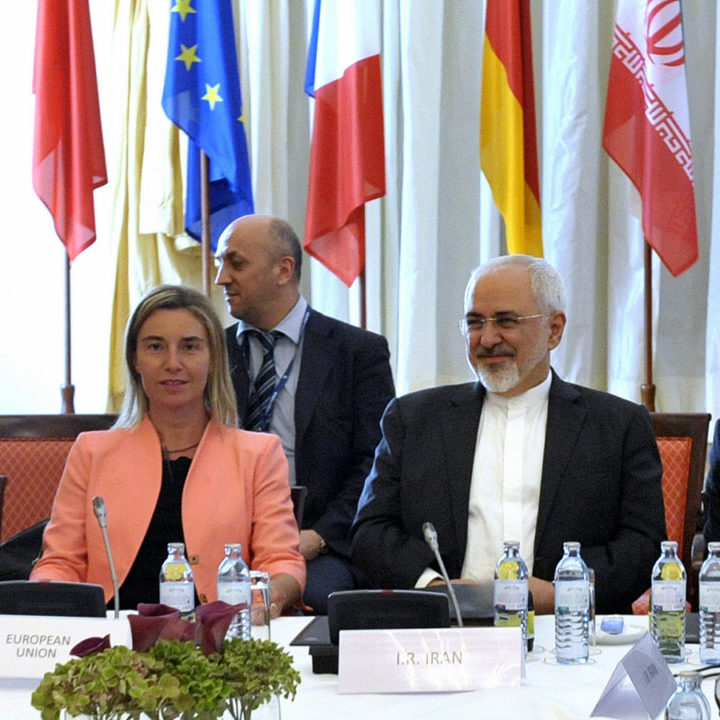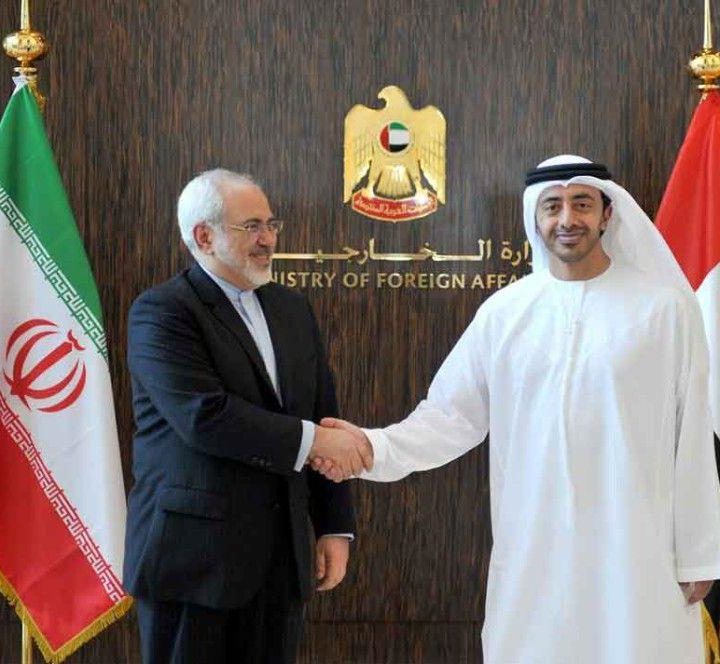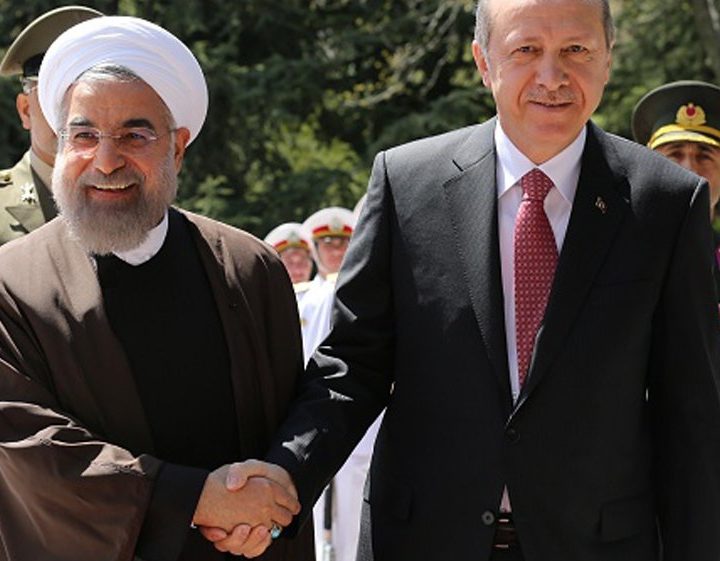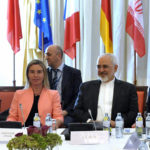Trading With Afghanistan
Afghanistan is one of the more difficult regional trade partners by virtue of a number of factors, not least: poor infrastructure, over twenty years of conflict and terrorist activity, mountainous terrain, extreme weather conditions and to some degree, being land locked, numerous environmental disasters. All of these issues have made Afghanistan one of the poorest countries in the world. In 2016, according to MIT, Afghanistan exported goods valued at $482M and imported $3.77B of goods and services, leaving a negative trade balance of $3.29B.
Chronic political instability and a lack of democratic structures of governance mean markets and communities struggle. For this reason, Afghanistan is still largely regarded abroad as a mere transit country. Logistics infrastructure remains under-developed, with little private foreign investments in this sector.
In spite of these challenges, the local private sector is continuing to develop. With a population of around 35 million, there are many people aspiring to a better lifestyle. The Ministry of Transport and Civil Aviation develops strategy and planning of transport infrastructure. The government, with the support of allies, is undertaking various road, rail and air projects to facilitate better trade access.
Afghanistan borders China, Iran, Pakistan, Tajikistan,Turkmenistan and Uzbekistan. Given CIS partners emergence together with the proximity of the burgeoning markets of Iran and hotbed of trade in China, despite the many hurdles the country has to overcome, the future could be much stronger for Afghanistan and her trade partners.
Export and Import Profile For Trade With Afghanistan
Afghanistan’s main export and import products, plus key trade links and trade partners are described here.
According to MIT’s latest updates, official export and import profiles (excluding drug and people trafficking) are as follows.
Key export products of Afghanistan:
- Grapes: 20% / 96.4M
- Vegetable Saps: 18%/ 85.9M
- Other Nuts: 12% / 55.9m
- Knotted Carpets: 8.1% / 39M
- Tropical Fruits: 7% / 33.9M
- Sorghum: 6.8% / 32.9M
Key import products of Afghanistan:
- Wheat flours: 18% / $664M
- Peat: 16% / $598M
- U. m Gas: 7.9% / $296M
- Ornamental Trimmings (textiles): 8.9% / $335M
- Inedible fats and oils: 8.4% / $316M
- Stone Processing: 6.1% / $229M
Key Export Destinations:
- India: 46% / $220M
- Pakistan: 41% / $200M
- Iran: 3.1% / $15.1M
- Iraq: 2.1% / $10.1M
- Turkey: 1,9% / $9.15M
Main Import Origins
- Iran: 22% / $840M
- Pakistan: 17%/ $653M
- China: 14% / $526M
- Kazakhstan: 13% / $499M
- Turkmenistan: 7.7% / $289M
Logistics Issues For Trading With Afghanistan
The main transit hubs and markets for Afghanistan are in some of the towns and cities. We list those with populations above 150,000 people here.
Kabul 3,589,000
Kandahar 491,500
Herat 436,300
Mazar-i-Sharif 368,100
Jalalabad 306,500
Kunduz 304,600
Lashkargah 250,200
Taloqan 219,000
Puli Khumri 203,600
Charikar 171,200
Sheberghan 161,700
Ghazni 157,600
Sar-e Pol 150,700
Border Crossing Points For Afghanistan’s Trade Partners
| Iran |
| · Islam Qala |
| · Milak, Sistan and Baluchestan |
| · Shand-e Dinar |
| · Taybad |
| · Zaranj |
| · Urmia |
| Pakistan |
| · Angur Ada |
| · Bab-i-Pakistan |
| · Broghol |
| · Dashti Yahudi |
| · Dorah Pass |
| · Ghulam Khan |
| · Gomal Pass |
| · Khyber Pass |
| · Lataband Pass |
| · Peiwar Pass |
| · Torkham |
| · Usheri Pass |
| · Wesh–Chaman border crossing |
| Tajikistan |
| · Ishkashim, Afghanistan |
| · Ishkoshim, Tajikistan |
| · Panji Poyon |
| · Sher Khan Bandar |
| · Tajik–Afghan bridge at Tem-Demogan |
| · Tajik–Afghan Friendship Bridge |
| · Tajik–Afghan bridge at Panji Poyon |
| Turkmenistan |
| · Aqina |
| · Murichaq |
| · Serhetabat |
| · Torghundi |
| · Ymamnazar |
| Uzbekistan |
| · Afghanistan–Uzbekistan Friendship Bridge |
| · Hairatan |
| · Termez |
Transport in Afghanistan is limited but in development. New national highways, roads, and bridges have increased road haulage and trade with neighbouring countries. There are some safe routes between destinations, but the security landscape continues to shift and change, so up to the moment logistics planning advice from Tehran Nasimis recommended.
Road Freight Transport Options for Afghanistan
| Kabul-Kandahar Highway (A-1) |
| Kabul-Jalalabad Road (A-1), Kabul – eastern Jalalabad and the Pakistani border atTorkham |
| Kabul-Gardez Highway |
| Kabul-Herat Highway (A-77) |
| Kabul-Mazar Highway (A-76) |
| Kabul-Fayzabad Highway |
| Kandahar-Bamyan Highway |
| Kandahar-Boldak Highway |
| Kandahar-Herat Highway |
| Kandahar-Tarin Kowt Highway |
| Kunduz-Khomri Highway |
| Herat-Islam Qala Highway |
| Herat-Mazar Highway |
| Route Trident (Lashkar Gah – Gereshk) |
| Delaram-Zaranj Highway |
| Gardez-Pathan Highway, Paktia Province (under construction?) |
Rail Freight Transit for Afghanistan
Afghanistan-Iran:
Mashhad is a main rail termination point, but rail track now extends from Tehran to Khaf just inside the border. This line is now extended 191 kms east to Herat, in Afghanistan.
The Khaf – Herat link is not only significant for both countries either side of the border, but also trade with India.
Afghanistan –Uzbekistan:
A 75 km railway, between Uzbekistan and the northern Afghan city of Mazar-i-Sharif, begins from Hairatan, connecting to Termez and crosses the Amu Darya river on the Soviet-built Afghanistan–Uzbekistan Friendship Bridge. It reaches the northern Afghan Mazar-i-Sharif Airport within an hour and a half. Mazar-i-Sharif is the second largest Afghan city.
This line is an extension of the Termez-Hairatan line, which is the entry point of more than half of country’s imports and humanitarian aid from abroad. In the past, freight was offloaded at Termez for road freight.
The rail line extends to Kabul and then to the eastern border town of Torkham, connecting with Pakistan Railways.
Afghanistan-Turkmenistan:
A 10 km line extends from Serhetabat in Turkmenistan to the town of Towraghondi in Afghanistan.
Another line that runs from Aqina dry port in Faryab Province via Imamnazar to Atamyrat, connects with the Turkmen rail network.
This line connects to other northern provinces of Afghanistan.
Afghanistan-Pakistan:
Pakistan have a transport agreement of railway development between the two countries. Two Pakistan Railways lines terminate near the border at Chaman in Balochistan near the Khojak Pass and at Torkham, the border town near the Khyber Pass. Lines extend on to Kandahar and Kabul respectively.
Sea Freight / River Transport in Afghanistan
Landlocked Afghanistan has no seaports but the Amu Darya river forms a border waterway network with Turkmenistan, Uzbekistan, and Tajikistan.
Afghan-Tajik bridge: A bridge, 700 metres long and 11 metres across, straddles the Panj river, a natural border between Afghanistan and Tajikistan. This links the Tajik port of Nizhny Panj to Shir Khan Bandar in Afghanistan
Air Freight Transport in Afghanistan
The nation has about 53 airports and a number of heliports, plus some smaller airports.
| International Airports |
| Hamid Karzai International Airport |
| Herat International Airport |
| Kandahar International Airport |
| Mazar-i-Sharif International Airport |
|
Key Domestic Airports |
| Ghazni Airport |
| Jalalabad Airport |
| Khost Airport |
| Kunduz Airport |
| Bost Airport |
|
Regional Domestic Airports |
| Bamyan Airport |
| Chaghcharan Airport |
| Darwaz Airport |
| Farah Airport |
| Fayzabad Airport |
| Gardez Airport |
| Khwahan Airport |
| Razer Airport |
| Maymana Airport |
| Nili Airport |
| Sardeh Band Airport |
| Qala i Naw Airport |
| Sheberghan Airfield |
| Sheghnan Airport |
| Taloqan Airport |
| Tarinkot Airport |
| Zaranj Airport |
Seasonality Impacts on Transit in Afghanistan
In terms of seasonal impacts on transit, Afghanistan’s climate is generally arid, but has cold and relatively rainy winters. March is often the wettest month. July and August can see increased Monsoon rainfall. Summers are hot and sunny, with weather varying significantly between areas, occasionally impacting transit, so up to the moment information and planning can be essential for timely deliveries.
In the northern plains, crossed by the Amu Darya River, on the border, Winter cold hits -20 to -25°C. Summer peaks at 45°C or more, with scorching sunshine. Transport via Mazar-i-Sharif, requires forward planning, as also in the far north-east where the Wakhan Corridor, near the border with China, where it freezes.
During winter, the northern central area can see snow, especially in the mountains. Rarely this happens in the south too.
The east is relatively rainy, including in summer, being impacted by the Indian monsoon. Near the Pakistan border in the Konar and Nurestan provinces, rainfall is significant. Kabul is cold in Winter; the average temperature in January is -1°C, but nights can freeze to -20 to -25°C; snowfalls are fairly frequent and sometimes heavy.
Bamyan, 125 km north-west of Kabul , also sees freezing winters. Herat,in the western Hari River Valley, sometimes sees snow and intense frosts, making overland transit problematic at some times of the year. From June to September, sand, dust and salt blow interspersed with torrid sun.
In Farah, in the south-west the temperature runs to 33°C in July. In Kandahar, in the southeast, near the desert, temperatures also run to over 30°C. South of Kandahar, Sistan and Baluchistan has expansive desert.
Zaranj, in the province of Nimruz, near the border with Iran, Spring to Autumn are ideal for overland transportation of goods.
Geo Political and Security Considerations When Trading With Afghanistan
Afghanistan has been subjected to foreign occupation in the past and the country also experiences factional in-fighting between various ethnic tribes. Al Qaida and the Taliban, drug and people trafficking operate in the country. Unsurprisingly the country is very poor economically, with corruption and heroin cultivation being massive problems.
Efforts have been aimed at diversifying the economy by various foreign partners, expanding opportunities for the largely agrarian people. Afghanistan has a small manufacturing base, with few value-added industries, which limits revenues from exports.
International financial and security support has been vital in developing the struggling economy post 2001. Still, up to 80-90% of the Afghan economy is informal.
While 60-80% of people involved in the agricultural sector, this still only accounts for a third of the country’s GDP; insufficient irrigation, limited rainfall, lack of market access and other structural constraints limit scope in this industry.
Government expenses exceed revenues, resulting in socio-economic dependency, particularly on the World Bank, U.S.A., China and India, as much as trade with terrorist factions.
Since military withdrawals in recent years, demand for transport, construction, telecommunications and other more sophisticated services has fallen, slowing development . Afghanistan’s formal financial services sector is still small, so domestic credit remains extremely limited.
Growth will depend on stronger security, institutional and legal reforms and investments in key economic sectors, such as mining and agriculture. For foreign investors, there are three overlapping legal systems to navigate: Sharia (Islamic Law), Shura (traditional law and practice) and the formal, constitutional system. This can be off-putting to Afghan entreprenE.U. rs, plus foreign investors.
Nevertheless, China sees Afghanistan as key to its east-west new Belt and Silk Road project. India too, seeking to by-pass Pakistan, wants Afghanistan to become a freight hub. Certainly, the West too has much to gain from influence in a country which is both a source of serious drugs and potential terrorism.
As infrastructure links develop, however, the capacity for trade links in the region continues to expand, establishing Afghanistan as another regional transport hub.
Similarly, ascension to the WTO may speed the move away from internal corruption, which currently prevents fair application of the laws. Similarly, it may help the development of commercial regulatory bodies to oversee industrial practice.
Corruption of government and military officials hinders accountability, reforms and progress. Some western countries view patronage and nepotism as greater threats to fair progress than isolated bombings and kidnappings that continue. So called ‘unofficial taxes’ together with deliberate bureaucratic impositions are stratagems of the corrupt in powerful positions.
Drug trafficking and people smuggling are still viewed as opportunities for poor communities to earn a living, where alternatives are limited. As a result, the on-going struggles to undermine terrorism from Al Qaida backed activity and Taliban war lords shows no sign of abating in the post-occupation period.
The New Silk Road is viewed by private investors as Afghanistan’s opportunity to integrate further into the region and develop economically. Reconstruction of key traditional trade and infrastructure links now means that Afghanistan and its neighbours are poised to participate more in the future global economy, as global power shifts steadily eastwards.
Some of these new North-South and East-West transit and trade routes across E.U. rasia reduce barriers to trade. Afghan people have to release any fear of being ‘taken over’ by traditional power houses to build their own power base. To do this, the limits on financial data systems will require investment.
By investing in each other’s economies and supporting international development and cross-border projects, Central Asian nations can use their important geographical status to gain not only leverage with trade partners, but benefit people struggling at home, often at a subsistence level in Afghanistan.
With risk of political manipulation of Afghanistan spread between counter-balanced economic powers, such as the U.S., China, India and Russia, these strong trading partners can help support Afghanistan’s transition to a diversified economy. Afghanistan’s regional partners are aware that all have more to gain economically and socially by working together.
Enhancing connectivity in a region that is so fragmented is hugely challenging, but the transformational benefits are exciting. This is why Afghanistan’s bigger trade partners, such United States, Russia, China and India, are so supportive of the New Silk Road initiative.
In particular, there are four areas for opening up in Afghanistan:
Regional Energy Markets: South Asia has a collective population of more than 1.6 billion people, where their needs and economies growing rapidly. Affordable, efficient, and reliable energy is vital. Afghanistan and her regional partners have access to vast energy resources – including oil, gas, solar, wind and hydropower. Projects of interest include:
- The CASA-1000 regional electricity grid, making hydro power available for Afghanistan from Tajikistan and Kyrgyzstan;
- Various energy transmission lines, hydropower plants and associated reforms in Afghanistan
Trade and Transport: More reliable roads, railways, bridges, and border crossing facilities are achieving investment. However, this still needs development in the area of harmonising customs systems, participation in multilateral trade institutions and diplomatic missions to achieve better working partnerships, to break down institutional and bureaucratic barriers to trade.
Apart from WTO support from the U.S.A. and the construction projects funded multi-laterally, technical assistance on the 2010 Afghanistan-Pakistan Transit-Trade Agreement (APTTA) and support for the Cross-Border Transport Agreement (CBTA) between Kyrgyzstan, Tajikistan, and Afghanistan have been significant breakthroughs in recent times.
Customs and Border Operations:Profitable regional trade depends on efficient international transport and logistics. Also, border security and good governance prevent transit of illegal weapons, drugs, and human trafficking.
Since 2009, intra-regional trade in Central Asia has been estimated to have increased by 49%, according to the U.S. State Department. Also, since 2011, the average cost of crossing regional borders has decreased by 15%. Furthermore, customs procedures have been streamlined at seven Afghan border crossing points, meaning quickly expedited trade. Less than a decade ago, the average release time was eight days; in 2013, this stood at three and a half hours, saving tens of millions annually for businesses in the region.
Business is About People:Development is also about sharing ideas and the expansion of markets by creating opportunities for youth, women and minority ethnic groups and the disabled. In turn, this improves legitimacy of governing regimes and by extension, regional stability and prosperity.
Thus, supporting educational institutions is key to skilling up young people. Similarly, the Central Asia-Afghanistan Women’s Economic Symposium and South Asia Women’s EntreprenE.U. rship Symposium supports thousands of women entreprenE.U. rs and business owners.
Trade delegations, meetings and conferences in Almaty, Islamabad, Kabul, Mazar-i-Sharif and Termez has resulted in more than $15 million in trade deals.
In summary, so long as Afghan people remain on their current development trajectory, future generations of business owners and employees will enjoy a future only imagined by the majority right now.
Reader Note: The views expressed in this article do not necessarily reflect those of Tehran Nasim

